Spot-On Performance Connects Plant, Paving Crews
BY AsphaltPro Staff

It was a normal day in the office when Andy Decraene, Vice President of Construction for Ajax Paving Industries, Nokomis, Florida, overheard a couple of colleagues talking about adding trucks to a particular job. Decraene opened up Spot-On Performance (SOP), a truck management solution from Spot-On Performance Paving, Cape Coral, Florida, on his computer. With a couple clicks of his mouse, he quickly discovered the root of the problem.
“It wasn’t a problem with the paving crew,” Decraene said. “It was a plant delay. They were so busy that they couldn’t keep up with our jobs and sales to other customers. Adding trucks would have made the problem worse.”
Before Ajax began using SOP in January 2020, they’d tried a number of similar solutions over the years with varying levels of success. Ultimately, it was the minimal amount of human interaction that SOP requires to operate that set it apart from similar solutions. “Most programs require more administration, but SOP works on its own,” Decraene said.
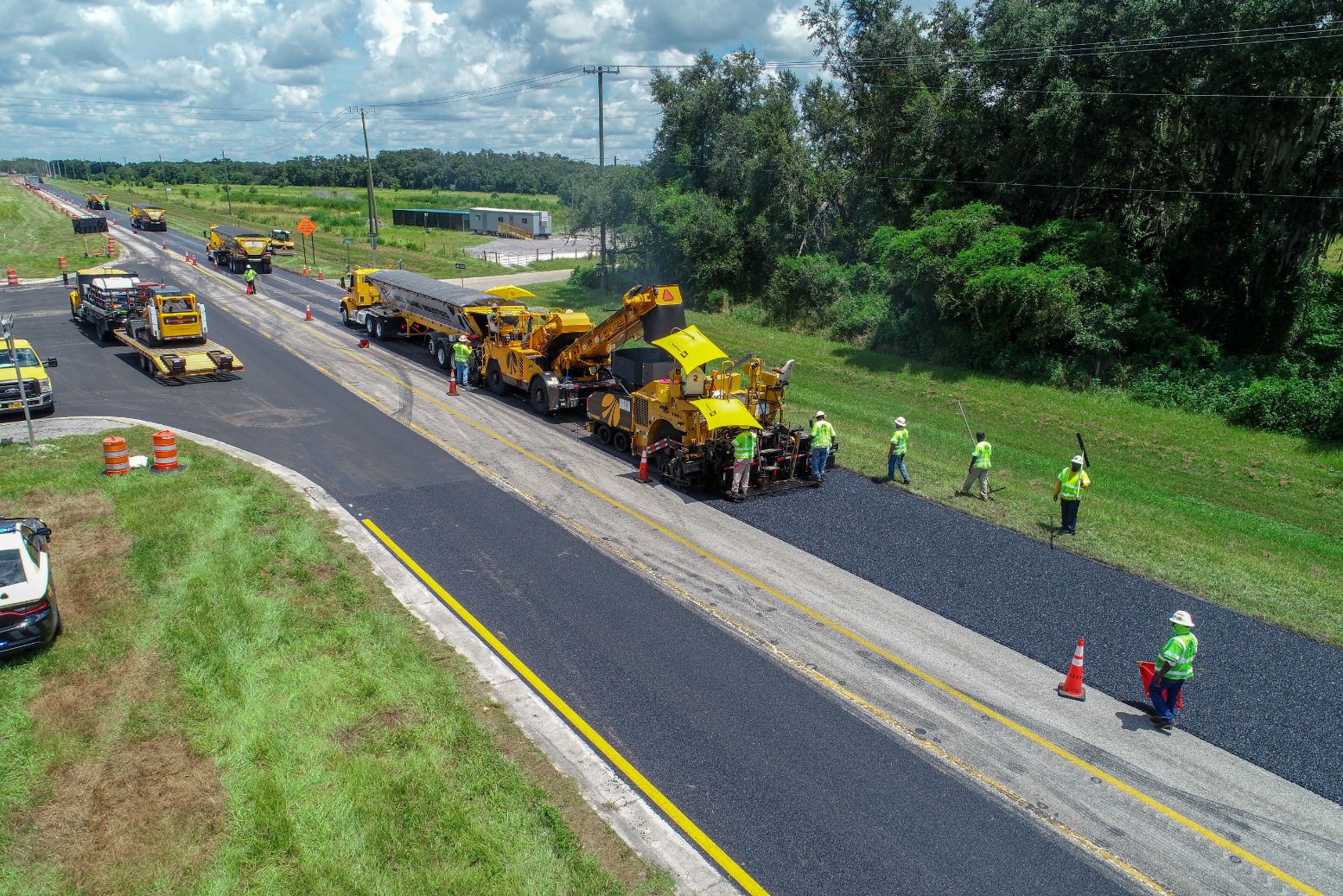
Quality control (QC) staff and inspectors at the plant and in the field can add details to e-tickets within SOP, such as temperature readings and test results. Photo courtesy of Ajax Paving
That was exactly the type of solution Mark Minich, President of Spot-On Performance Paving, set out to develop. During his 45 years in the asphalt business, Minich noticed how it seemed as though the asphalt plant and the paving crew often operated as two different entities, even when they were part of the same company. “Even though they were interrelated, they were always disconnected,” he said. “One hand never knew what the other hand was doing.”
Although he’d been developing his idea for years, Minich hired a programmer, Tom Donchez, to make his ideas a reality in August 2018. To date, SOP has been used on more than 2,900 project shifts and more than 2.4 million tons of material, according to Minich.
“I think what makes SOP stand out is that it’s automatic and it doesn’t require hardware or connected devices in trucks,” Minich said. “And, the fact that it was designed by an asphalt guy.”
SOP in Action
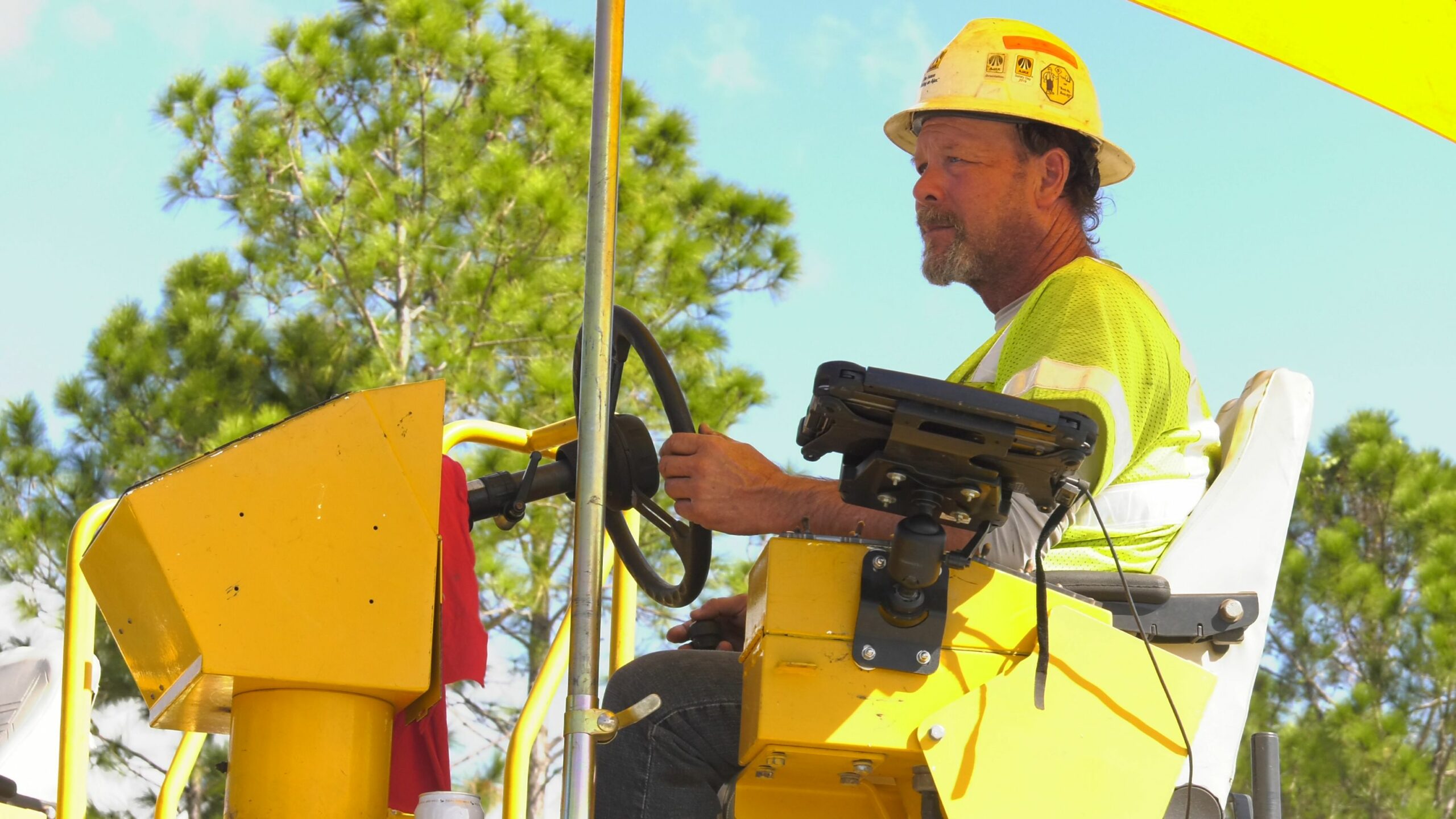
Both Decraene and Ajax Paving Foreman Chris Ance appreciate the simplicity of the SOP interface at the paver. “We’ve tried solutions where you can see the whole map, but that turned out to be a negative for the paving crew,” Decraene said. “They had to keep zooming in and out to see each truck.” Photo courtesy of Spot-on Performance Paving
After installing SOP on seven Ajax plants over the course of two or three days at each plant, Ajax’s team could hit the ground running on the platform. Ajax asphalt superintendents and construction managers immediately began using the platform to order trucks, and dispatchers used the platform to assign trucks to each job. SOP then automatically populates truck schedules and communicates them to drivers by email.
Ajax equipped its pavers with Toughbook tablets mounted next to the operator console, so the operator can always see when trucks are expected to arrive on the job. Both Decraene and Ajax Paving Foreman Chris Ance appreciate the simplicity of the SOP interface at the paver.
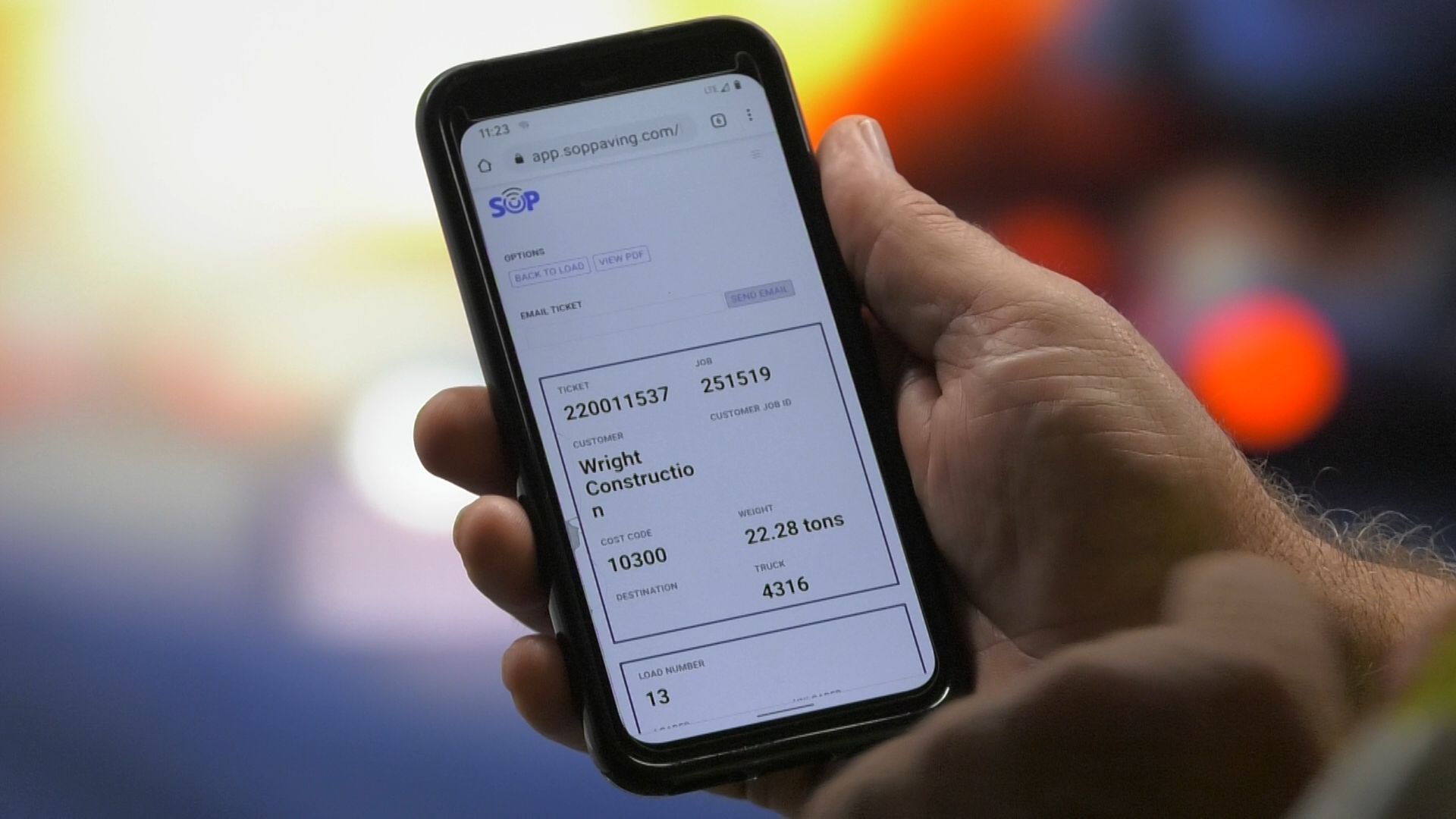
SOP has been used on more than 2,900 project shifts and more than 2.4 million tons of material. Photo courtesy of Spot-on Performance Paving
“We’ve tried solutions where you can see the whole map, but that turned out to be a negative for the paving crew,” Decraene said. “They had to keep zooming in and out to see each truck.”
With SOP, there is a bar chart with trucks listed in order of their estimated time of arrival. ETAs are based on SOP’s unique heavy truck-specific routing, which uses real time traffic information along with speed and route restrictions to provide accurate ETAs. With this approach, trucks don’t have to be equipped with special devices and drivers don’t have to download any new apps.
Ajax has tested SOP’s estimated arrival times in the field and found them to be accurate within a minute or two. “I used to have to call the plant every time I’d be waiting for a truck more than a couple minutes,” Ance said. “Now, I can see exactly when the next truck is expected to arrive and slow down our operation to keep things in line.”
When each truck arrives, the paver operator taps a button on the tablet screen to accept the load, a digital alternative to taking a paper ticket from the driver. Although Ajax didn’t invest in SOP for its e-ticketing capabilities, the platform’s ability to automatically generate e-tickets came in handy when the Florida Department of Transportation began to require e-ticketing during the COVID-19 pandemic.
The e-tickets and accompanying details are immediately available to authorized users via the SOP online platform and the SOP app, and are updated in real time as additional information is added. Authorized users can send these e-tickets by email, or download as PDFs or Excel spreadsheets.
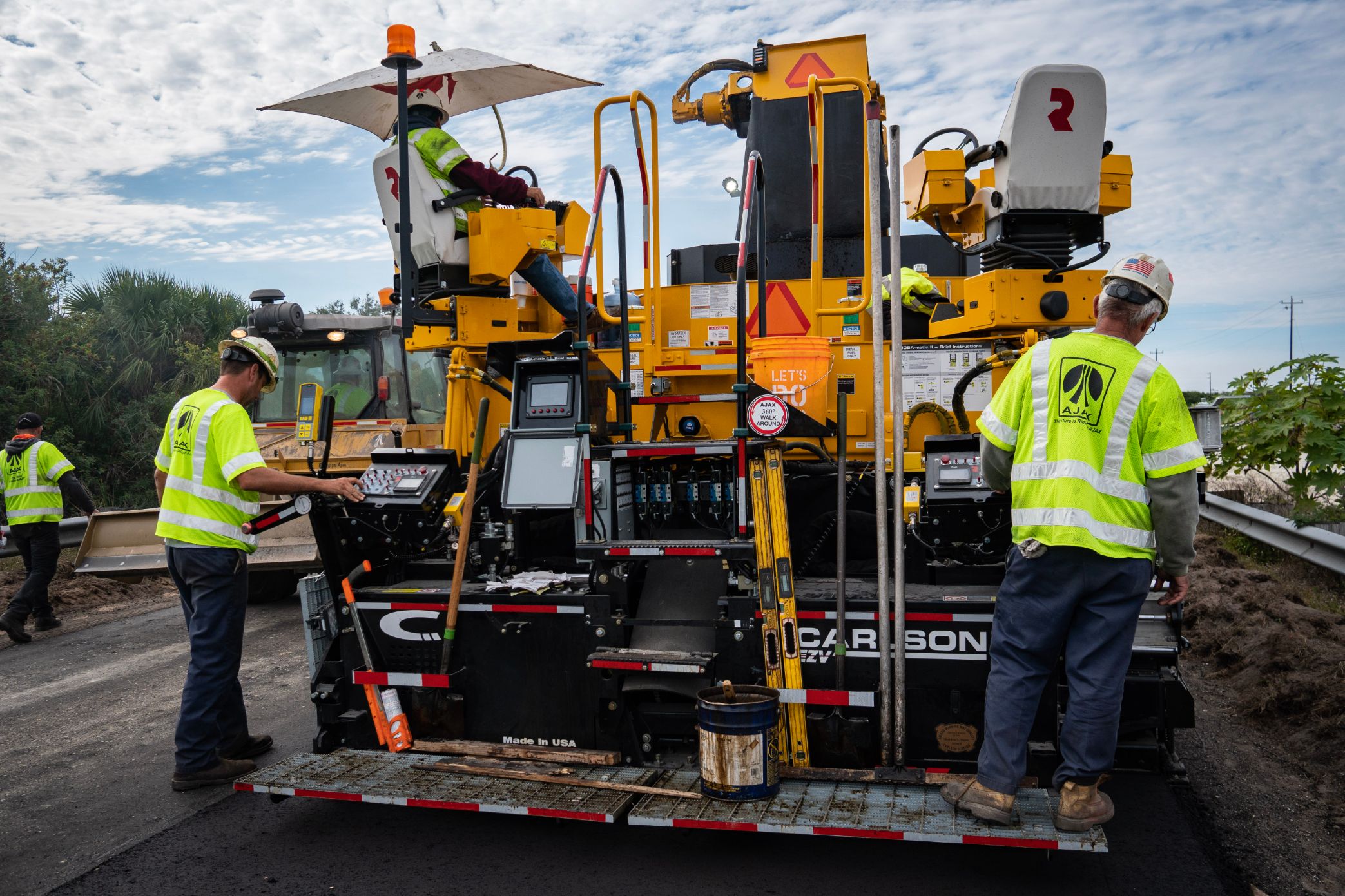
One of the ways Ajax plans to raise the bar in the future is to use SOP to monitor production targets for each day and each job. Photo courtesy of Ajax Paving
Quality control (QC) staff and inspectors at the plant and in the field can also add details to e-tickets, such as temperature readings and test results. With SOP, the temperature of the mix as it leaves the plant is recorded and accessible to QC personnel in the field, and vice versa.
“The plant can see the temperatures recorded in the field and the temperature loss between the plant and the job and adjust the production temperature,” Minich said. “SOP gives both sides the opportunity to react and make the best possible decision.”
Users in the field can also add pictures and notes. Although Ajax hasn’t used this feature much, Decraene said he sees its potential for quality control. “Any Quality issues could be documented and attached to the exact load, which can be beneficial in delineating a problem,” Decraene said. “This usually happens by phone calls and/or emails, but like they say a picture is worth a thousand words.”
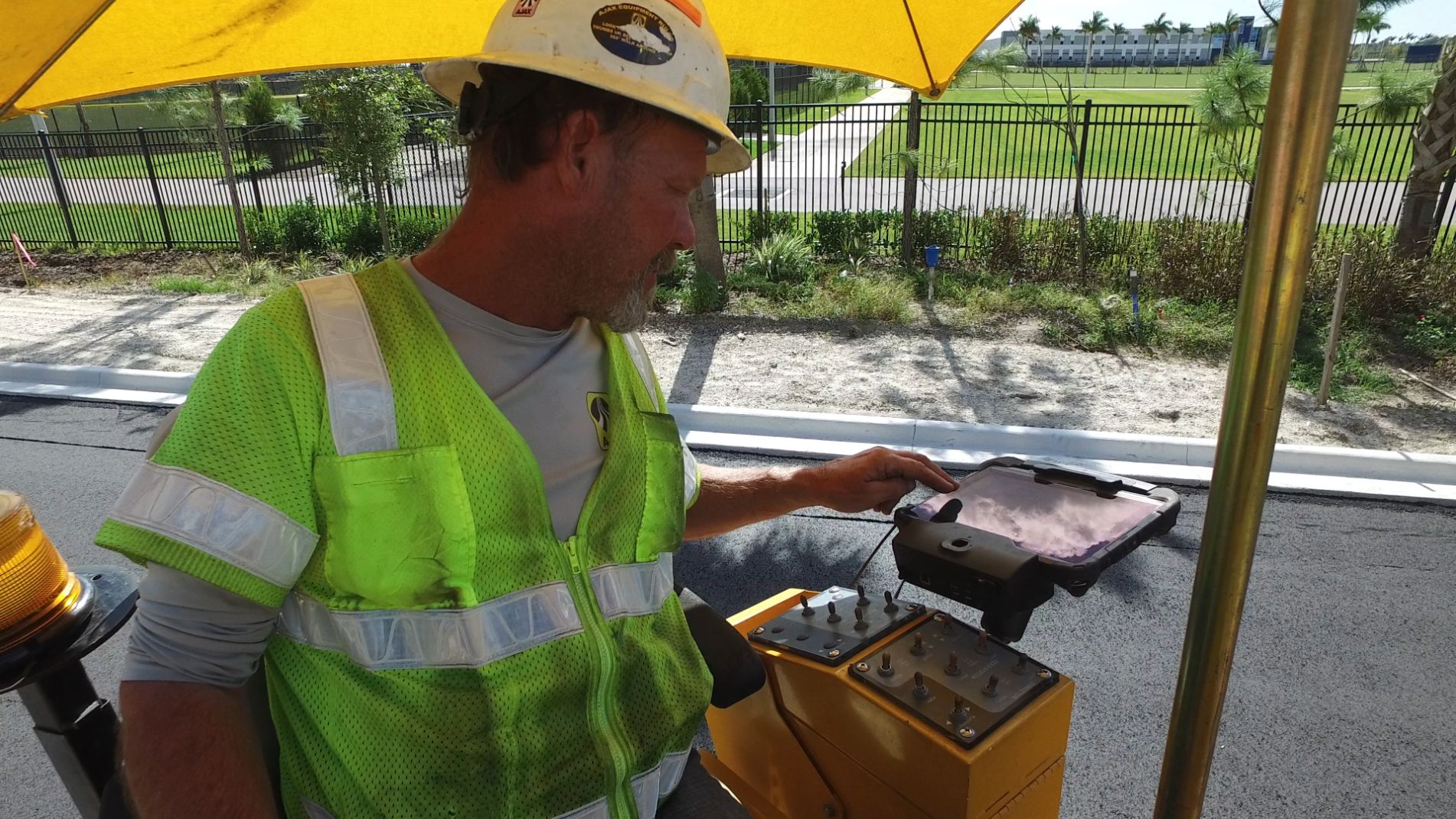
When each truck arrives, the paver operator taps a button on the tablet screen to accept the load, a digital alternative to taking a paper ticket from the driver. Photo courtesy of Spot-on Performance Paving
SOP also offers an executive management dashboard, which Decraene keeps open nearly all the time. “You can easily see all the trucks en route to the crew and to the plant,” Decraene said. “I am able get a quick snapshot of every job, how many trucks are loaded and how much has been paved.”
New Tool, Newer Features
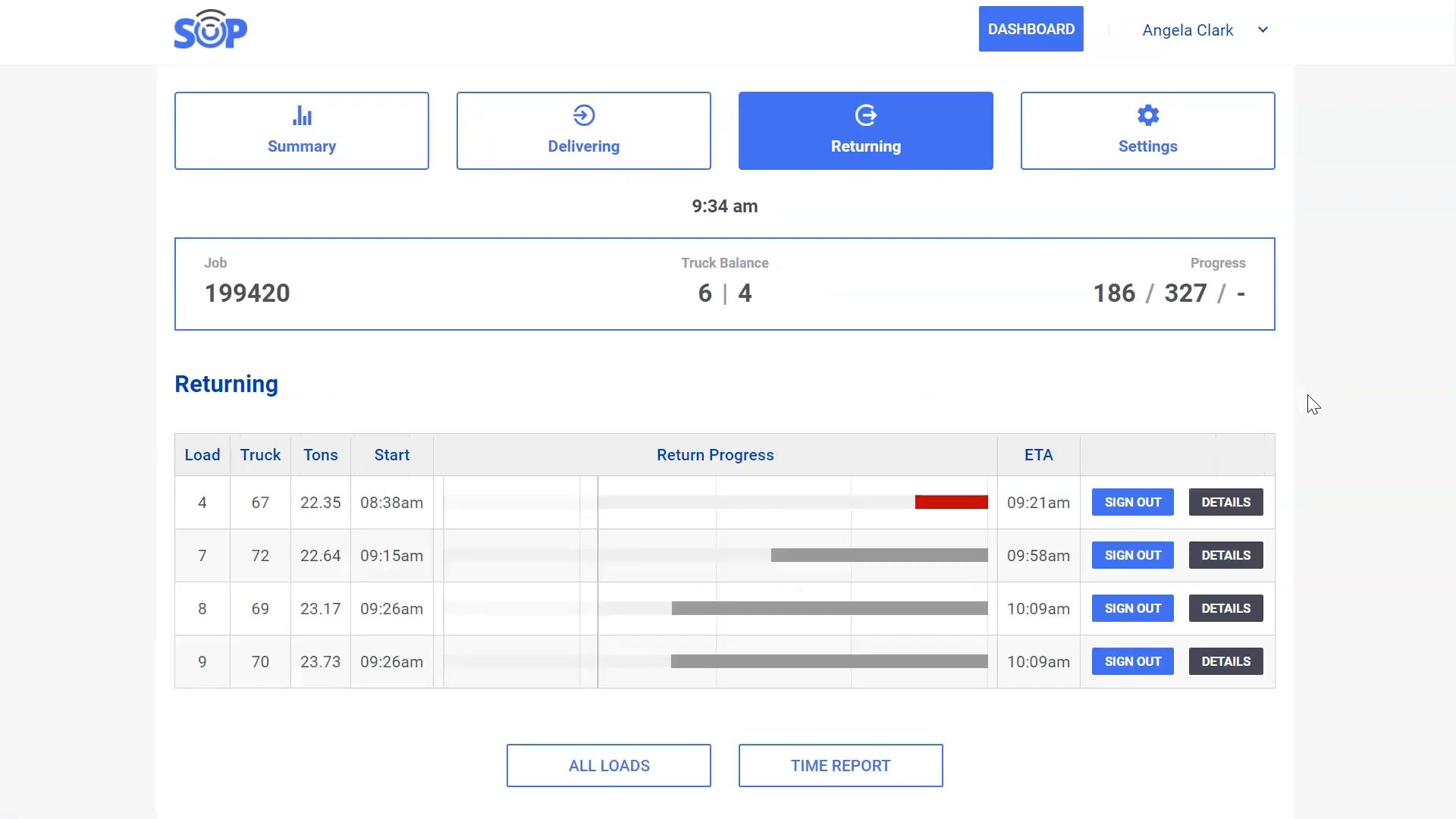
SOP is accessible both on desktop and via the SOP app. Photo courtesy of Spot-on Performance Paving
The SOP team is constantly working to improve the platform, in ways big and small. For example, with the information SOP gathers to deliver truck ETAs, the platform can also be used to improve hauling productivity.
By comparing each driver’s actual performance against projected haul times (accounting for travel time and traffic delays to keep scores uniform and comparable across jobs), SOP is able to rate the hauling performance of each driver on every trip. It can also be used for automatic truck time accounting based on the sign-in and sign-out times of each truck, as well as loading and unloading times to create more accurate trucking invoices.
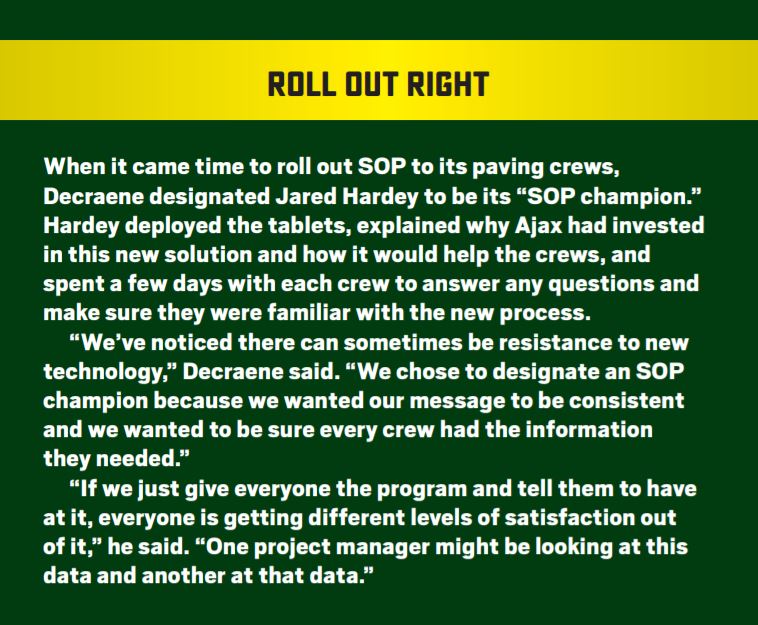
Although Ajax uses SOP to help with the invoicing process, the company has yet to use the tool for automatic payment. “We have high hopes to pay right through SOP in the future,” Decraene said.
SOP has also developed a native app for drivers that informs them when to arrive and shows their loads and tickets, without adding extra steps to the driver’s workflow.
SOP is also constantly updating the platform with small but useful features, as well. For example, they have added the function of tapping the username of a co-worker within SOP to automatically call them or tapping the location of the day’s job to automatically open directions to the job site in Google Maps. Just recently, they’ve added a voice-to-text feature to make it easier to add notes to tickets, as needed.
In addition to more than a dozen minor improvements since SOP’s launch, Spot-On Performance released version 2.0 in January 2021. SOP 2.0 allows customers of the asphalt plant to equip their pavers with tablets and realize the benefits of SOP. This is a feature Ajax plans to begin using in the near future.
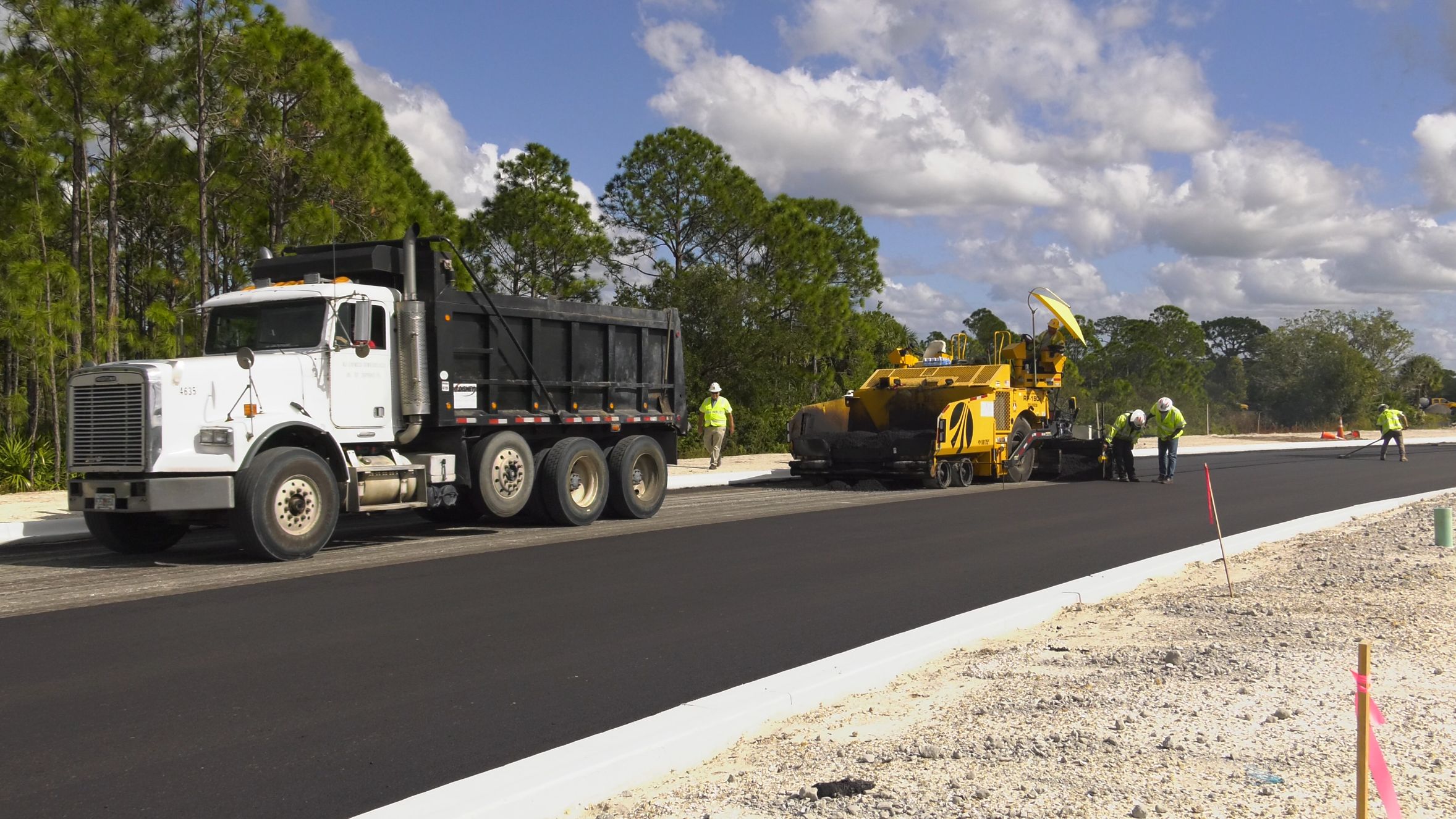
With SOP, there is a bar chart with trucks listed in order of their estimated time of arrival, so the crew always knows when the next load is expected to arrive. Photo courtesy of Spot-on Performance Paving
Despite having used the platform for more than one year, Decraene said the team continues to find new use cases for SOP.
“We’re still in the process of improving upon our operational skill set and utilizing the program properly,” Decraene said. For example, in January 2021, a group of users from across the company met via Zoom to discuss the different ways each of them uses the platform in an effort to standardize a set of best practices. “Like any tool, folks have to be educated on how to use it and what the information means.”
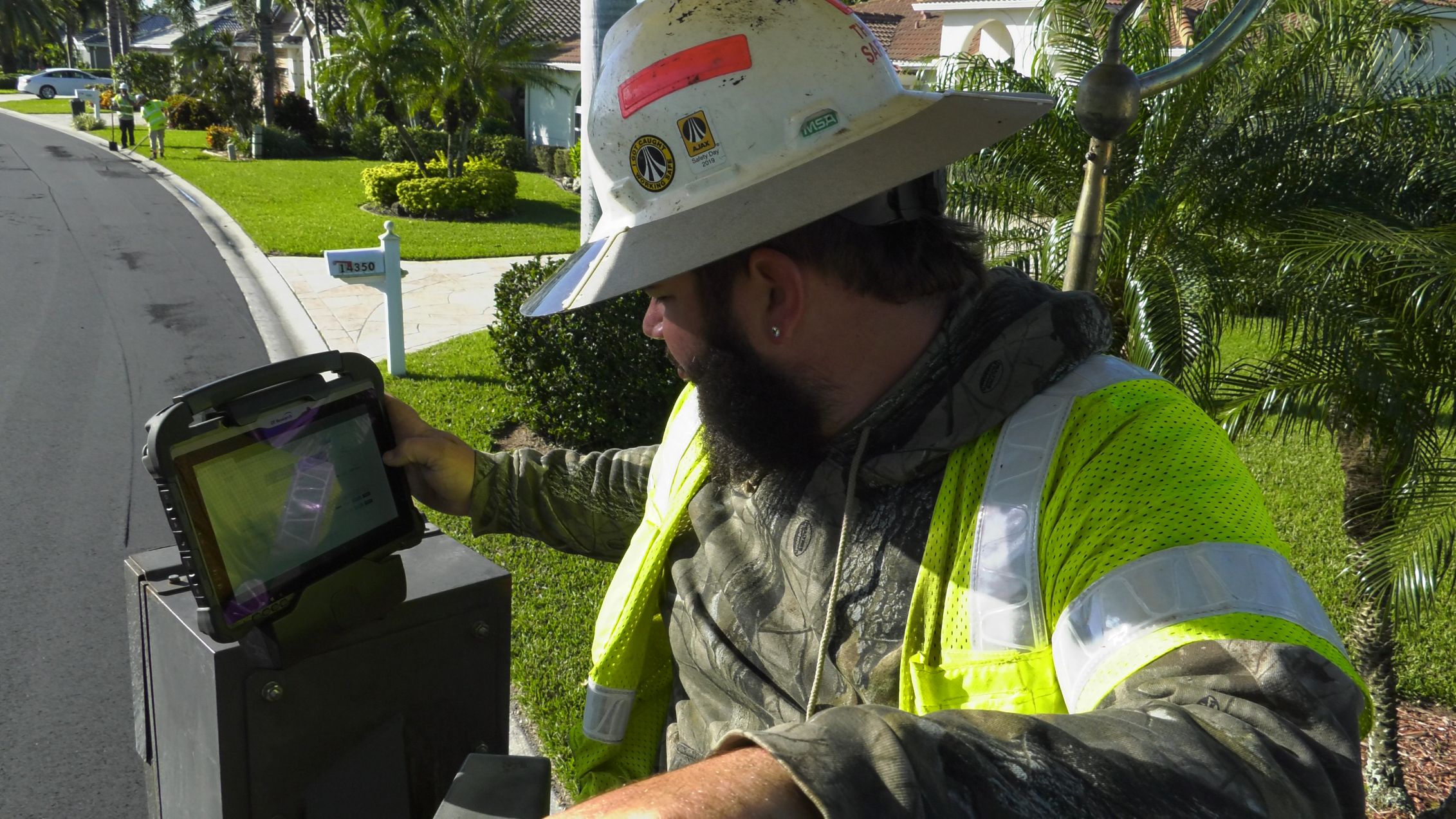
Ajax equipped its pavers with Toughbook tablets mounted next to the operator console, so the operator can always see when trucks are expected to arrive on the job. Photo courtesy of Spot-on Performance Paving
One of the ways Ajax plans to raise the bar in the future is to use SOP to monitor production targets for each day and each job. Both online and on SOP’s mobile apps, users can check the real-time production and paving progress against the target so foremen, plant operators and management remain informed on productivity and adjust production based on real-world conditions on the job.
“There are a lot of moving parts in this business, a lot of opportunities to lose money and to make money,” Decraene said. “What SOP does is it brings to light blind spots in your operation.”
